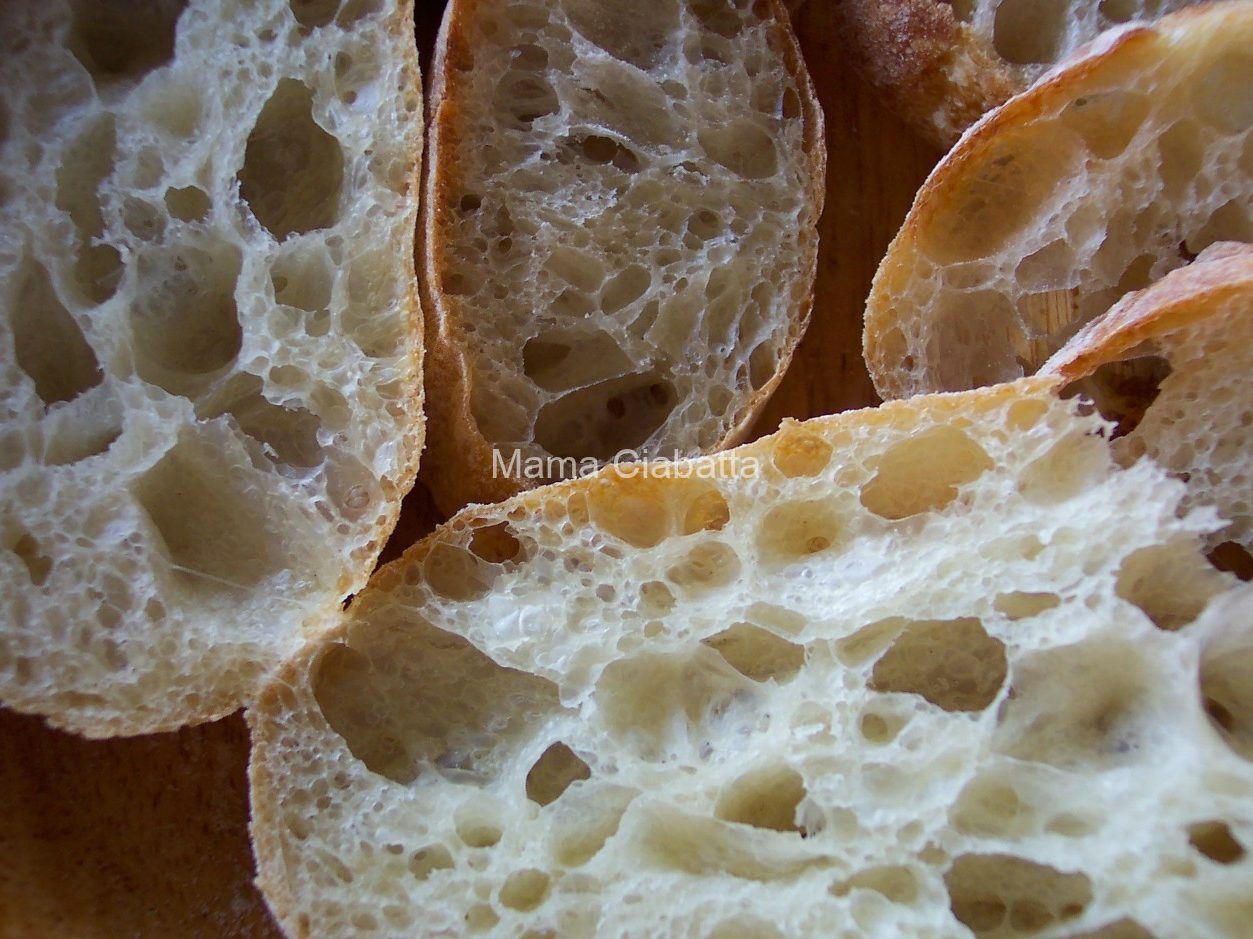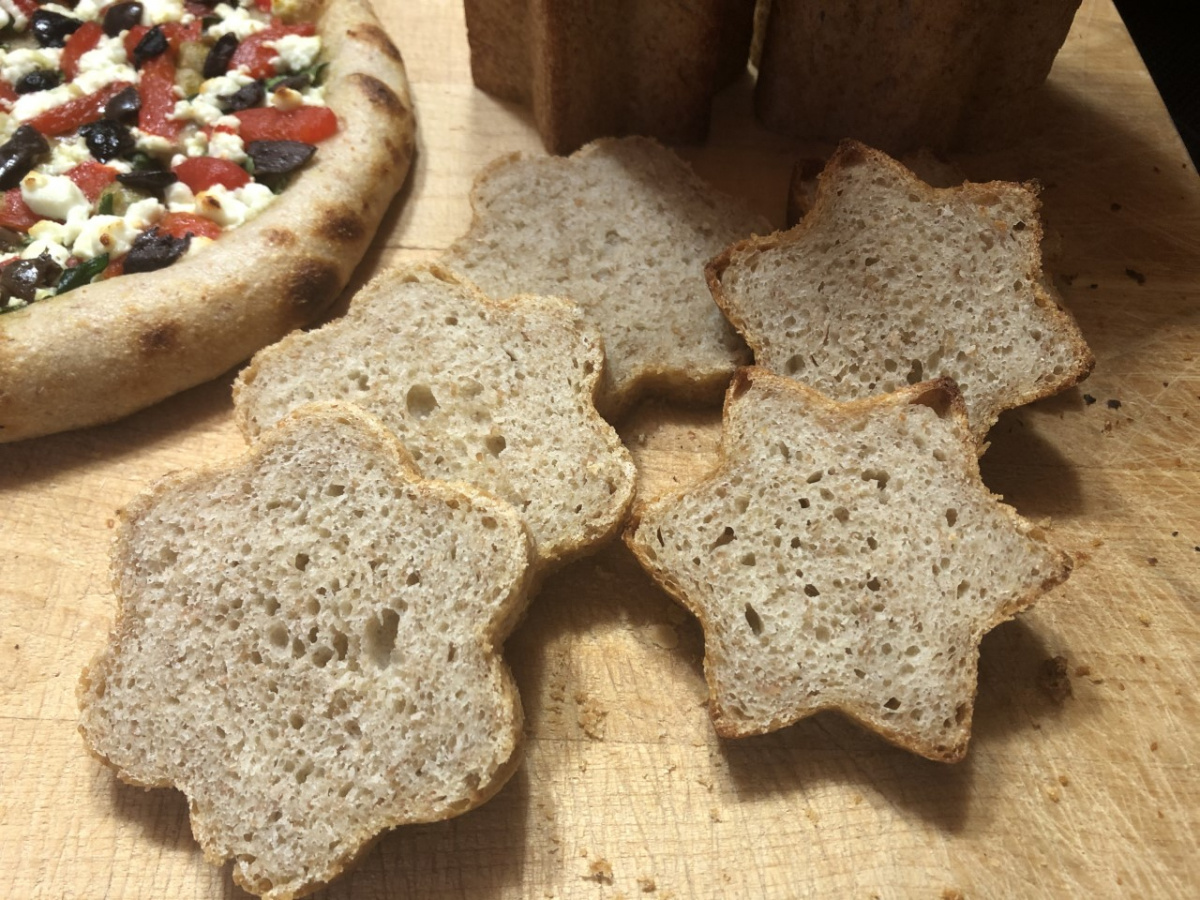I do not make all my bread sourdough. In fact, I started my baking adventure with artisan yeasted bread. Sourdough came into my life much later. I do make my everyday bread mostly sourdough, though. I also bake a lot of yeasted bread. I employ different methods, which allow me to work with as little yeast as possible. My goal is to make healthy bread.
Sourdough bread is trickier to handle than yeasted bread. I leave sourdough preparation for the weekend and use yeasted dough when I need some extra bread on weekdays. Yeasted dough is very forgiving and versatile. You can fit it into a very busy daily routine with ease. Stay tuned and I will show you how.
This dough is my new favorite for weekdays, unanimously approved by the family. It has a 40% flour mix with spelt flour, which gives a lot of flavor to the finished product. For the other 60%, I use bread flour. The dough has only 1/4 teaspoon of yeast for 1,770 grams of raw dough. It is suitable for bread and for a pizza or flatbread.
The ingredients:
Filtered or spring water — 725 grams
Bread flour — 600 grams
Spelt flour — 200 grams
Millet flour — 100 grams
Sprouted whole wheat flour — 100 grams
Yeast, active dry or instant — 1/4 teaspoon, leveled
Sea salt — 20 grams
Mixing the dough:
Pour water into the mixer bowl. Sprinkle yeast on top. If you use Active Dry yeast, follow the directions on the package on how to activate the yeast. I use lukewarm water and let the yeast rehydrate for 5-10 minutes. Instant yeast is ready for mixing with no activation.
Baking — pizza or flatbread:
550°F (288°C) on ceramic tiles for 6-7 minutes for 1 mini pizza or 8-9 minutes for 2 at a time.
Mini Pizza — 2
I used the refrigerated 150-gram pieces to make two mini pizzas and one flatbread with cinnamon and sugar for the kids. I baked all three of them at the same time.
550°F (288°C) on ceramic tiles for 9-10 minutes for 3 at a time. I do not make my dough rounds very thin. I think that the bread part in these mini pizzas is very significant. A thicker crust creates the perfect harmony between the bread and its toppings.
Happy baking!






































